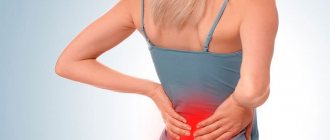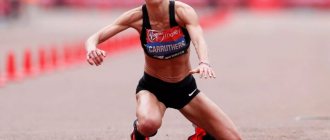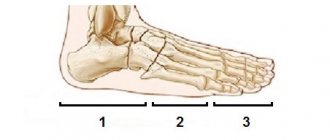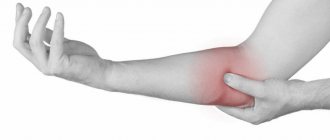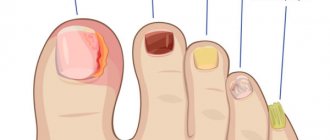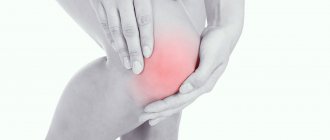Pain in the buttocks indicates the presence of pathologies, such as:
- lumbosacral radiculitis,
- formation of phlegmon and abscesses,
- osteomyelitis,
- furuncle
- or is considered a consequence of muscle overexertion.
Pain in the buttocks can also be caused by:
- osteochondrosis,
- coccyx cyst,
- intervertebral hernia.
If there is a disease in the lower parts of the spine, due to the location of the nerves, the pain may radiate to the legs or buttocks.
To diagnose the cause of pain, the patient should determine the nature, intensity and painful location. We recommend that you contact experienced proctologists.
The buttocks are considered symmetrical parts of the body and represent, figuratively speaking, a “layer cake”. The first, top layer is the skin. The second is the tissue of the left and right gluteal muscles, respectively. The third layer is represented by subcutaneous fat, which is located directly under the muscles and, in comparison with other parts of the body, is considered the most developed.
Pain in the butt occurs in any of the balls. A painful process in the buttocks indicates the consequences of an injury, the presence of an infectious or inflammatory process in the body, or muscle pathologies.
Symptoms that accompany pain in the butt
Pain in the butt is accompanied by a number of symptoms that worry the patient.
- discomfort and pain during bowel movements;
The appearance of pain in the butt is caused by anal fissures and hemorrhoids. The causes of anal fissures are poor hygiene, constipation, and mechanical damage to the mucous membranes.
Symptoms of cracks are:
- constant pain in the butt,
- bleeding,
- difficulty in defecation and discomfort.
Anal fissures often appear in women after natural childbirth.
- pain in neighboring areas;
In addition to the gluteal region, the patient has pain in the lower back, sacrum, coccyx, and thigh. The pain syndrome is accompanied by increased tone in the gluteal muscles, muscles of the lower back and lower extremities. As a result of changes in the spine and increased muscle tension, movement in the spinal column and hip joint is limited.
- general disturbance of health: malaise, weakness;
The patient feels severe weakness of the thigh and lower leg muscles, decreased sensitivity, and discomfort. Sometimes pain in the body is accompanied by discomfort in the buttock area. The patient complains of lack of appetite and worsening condition after eating. In this case, advice from a nutritionist and urologist is necessary.
- elevated temperature;
The patient's condition is accompanied by an increase in temperature. This process indicates inflammation or infection.
- headaches and dizziness;
There are complaints of headaches, migraines, dizziness. Sometimes cases of loss of consciousness are possible.
- nausea and vomiting;
Inflammatory processes in the buttocks are closely related to the gastrointestinal tract. The patient complains of nausea and vomiting, and belching.
- bowel dysfunction;
The patient develops fecal disturbances, upset and constipation, flatulence, bloating in the abdomen, discomfort in the buttocks and other organs.
- loss of consciousness and loss of coordination;
In severe cases, sharp pain in the buttock and increased body temperature are accompanied by impaired consciousness - the patient falls into a coma;
Treatment
Pre-hospital assistance
Patients with pain in the buttock are given rest. For severe pain, an anesthetic is given. For diagnosed diseases of the spine and neurological diseases, the use of warming and anti-inflammatory ointments is effective. Intense pain, poor general condition, and hyperthermia are reasons to immediately contact a specialist.
Conservative therapy
Conservative treatment includes drug and non-drug therapy. Patients may be prescribed:
- Protective mode
. Bed rest or exercise limitation is recommended. Sometimes the use of additional devices is indicated: walkers, crutches, canes. - NSAIDs
. Used for rheumatic and degenerative processes. Used in the form of tablets, injections, topical agents: gels, ointments, creams. - Antibiotics
. Necessary for infectious diseases. Treatment of specific infections is carried out according to special protocols. For nonspecific infections, broad-spectrum drugs are prescribed; after determining the sensitivity of the pathogen, antibiotic therapy is adjusted. - Physiotherapy
. To reduce pain, stimulate resorption, activate blood circulation, accelerate healing or improve nerve conduction, referrals are given for electrophoresis, laser therapy, UHF, and electrical stimulation. According to indications, exercise therapy, massage, kinesiotaping, acupuncture, and manual therapy are used.
Causes of pain in the buttocks
Medical experts identify the following causes of butt pain:
- herniated intervertebral discs in the lumbar region;
Acute severe pain radiating to the buttock is observed with herniated intervertebral discs in the lumbar region. Pain first occurs in the lower back - directly in the place where the affected disc is located, then goes down to the buttock and lower along the back of the thigh. The pain occurs only on the right or left, depending on which side the nerve is affected. Weakness occurs in the leg on the affected side, skin sensitivity is impaired, and discomfort is noted in the anal area.
- lumbosacral radiculitis;
The patient feels discomfort in the buttocks. The condition is accompanied by nagging pain.
- excessive muscle tension;
Severe pain in the butt indicates excessive muscle tension. Such symptoms are observed in athletes and people involved in physical labor.
- sciatic nerve neuralgia;
With neuralgia of the sciatic nerve, the patient experiences severe pain in the thigh and anus. The pain intensifies with movement and turning.
- infections of the female genital tract;
Severe cutting pain in the anus can be observed in women who have problems with the female genital organs. To establish an accurate diagnosis, you should visit a gynecologist.
- arthritis and arthrosis;
With arthritis and arthrosis, inflammation of the joints of other organs is recorded in the patient. The main symptom of this disease is pain between the buttocks while walking. To prevent the development of arthritis and arthrosis, the patient should visit a neurologist and orthopedist. Health care providers will prescribe medications, healing ointments, exercise therapy, and physical therapy.
- infection;
Pain in the anus after diarrhea indicates the presence of an infectious disease in the human body. The patient undergoes tests and visits a urologist.
Pinched pudendal nerve
The sacrotuberous ligament arises from the ischial tuberosity and attaches to the sacrum and coccyx, while the sacrospinous ligament lies at a 90-degree angle to it, deeper to the sacrotuberous ligament and attaches to the ischium. The thickness of these ligaments can lead to pinching of the pudendal nerve, called Alcock's canal syndrome or cyclist's syndrome.
In addition to pain in the gluteal region, symptoms of pudendal neuralgia include sexual dysfunction, rectal pain, fecal incontinence, and urinary incontinence. Thus, a pinched pudendal nerve can significantly impact quality of life.
This may be caused by prolonged sitting, especially when riding a bicycle, or a recent change of bicycle saddle. Symptoms are typically worsened by sitting, but sitting on the toilet has been reported to relieve pain by relieving pressure on the nerve.
Diagnosis and treatment of pain in the butt
The treatment process for pain in the buttocks depends entirely on the nature of the pathology. The patient needs to see a proctologist and attend an initial consultation. The doctor will examine the affected organ and perform palpation. If purulent discharge, bleeding and infectious processes are detected, then we suggest performing an operation to remove anal fissures.
For pain in the butt resulting from an injury, the patient is prescribed painkillers and warming ointments that can relieve swelling. Non-steroidal medications relieve pain and promote rapid healing of soft tissues.
For boils, patients are prescribed Vishnevsky ointment and ichthyol ointment. In untreated cases, medical workers use massages, warm compresses, and physical therapy.
After consulting a doctor, the patient begins to engage in physical therapy. Improves muscle tone and strengthens. Doctors at the private clinic “KDS Clinic” have developed a special gymnastic system that will relax injured muscles and reduce pain.
Hamstring tendinopathy
Hamstrings start at the ischial tuberosity (very close to the sciatic nerve). Proximal hamstring tendinopathy is common among long-distance runners and athletes performing sagittal plane exercises (eg, sprinting, hurdles) or change-of-direction exercises such as soccer and hockey movements.
Symptoms:
- History of repeated flexion loads. During flexion movements such as deadlifts and other flexion activities, the proximal hamstring tendon is subjected to tensile loading at its insertion on the ischial tuberosity.
- Deep localized pain in the area of the ischial tuberosity.
- The pain is worse when sitting, driving, lifting heavy objects, and running uphill. This occurs due to shear forces between the hamstring attachment and the ischial tuberosity as hip flexion increases. During running, force peaks in the late swing phase and has a second peak in the early stance phase.
- Positive straight leg raise test.
- A positive stoop test, which indicates sciatic nerve compression but does not rule out hamstring tendinopathy.
- Thickening on palpation around the ischial tuberosity.
Pain assessment should be performed as stress assessment tests are performed:
- Transition from a bridge with one leg bent at the knee to a bridge with a long lever.
- Deadlift on one leg.
- Three passive stretch tests (flexed-knee stretch, modified flexed-knee stretch, and Puranen-Orava test) have moderate to high validity and high sensitivity and specificity for diagnosing proximal hamstring tendinopathy.
Types of pain syndrome and places of its localization
At the initial stages, pain in the hip joint appears periodically and mainly bothers a person at rest; over time, the pain becomes permanent.
Depending on the nature of the pain, pain can be divided into three groups:
- acute pain - occurs suddenly and does not last long, determining its location is not difficult;
- aching pain – characterized by a wide affected area and periodic nature of occurrence, it is difficult to determine the location;
- Chronic pain in the left or right leg – bothers a person for a fairly long period (up to six months); it is usually treated with surgery.
When the hip joint is affected, the pain, as a rule, does not extend only to the localization of the source of inflammation. Other parts of the body may also be affected:
- shin;
- foot;
- hips;
- spine;
- buttocks;
- groin;
- the inner, outer or back of the legs.
If the pain is nagging, then most likely the person has a muscle strain, which will go away on its own in a few days. If pain in the hip joint on the right or left side does not disappear after a week, it is better to seek help from a doctor.
Exercises
Principles for selecting exercises:
- Try limiting exercise to 15 or 20 minutes per day to improve patient compliance and adherence.
- Avoid stretching at the beginning of treatment for tendinopathy to reduce the strain on the tendon and possibly return to it later when the pain has subsided.
- When treating tendinopathy, aim to keep pain below 5 on a scale of 10 and not worsen for 24 hours afterwards, especially when performing functional exercises such as step-ups, single-leg squats, dynamic lunges and split squats. .
- When performing the piriformis stretch with the hip flexed at 90 degrees, the hip should be externally rotated. The piriformis muscle is an abductor and external rotator of the hip below 45-60 degrees of hip flexion, but functions as an internal rotator above 60 degrees of hip flexion.
- Combine exercises with neurodynamic techniques such as sciatic nerve glides.
- Recommend glute strengthening in the form of bird-dog exercises, split squats, and functional loading exercises.
- Progressive loading with emphasis on hip extensors, abductors and external rotators.
Why does the tailbone hurt?
To understand why the tailbone begins to hurt when you sit and stand up, it is worth considering its function in the body. This is a rudimentary part of the spinal column, consisting of 3–6 vertebrae, to which muscles and ligaments from the pelvic organs are attached. Therefore, the coccygeal part of the spine is closely connected with these organs and reacts to any of their pathological conditions. The tailbone performs an important function - it partially distributes the load on the body and at the same time is its vulnerable part. If your tailbone hurts when you sit and stand up, a common cause is damage due to injury or disease.
Differential diagnosis
The following table presents conditions that may have symptoms similar to OHSS.
- Reactive hamstring tendon, bursitis. Running uphill, deadlifting, lifting boxes/other bending load, feeling like one is sitting on a boggy mass.
- Non-discogenic sciatic nerve entrapment. Radicular pain in the leg when flexing the hip.
- Pudendal neuralgia. Increased cycling time or changing saddles is accompanied by pain. Sitting on the toilet relieves pain.
- Ischiofemoral impingement syndrome, pain in the lumbar region, pain in the sacroiliac joint, pain when extending the hip or increasing step length. History of hip injury or surgery.
- Tendinopathy of the gluteus maximus, obturator or gemellus muscles. Limping after sitting for a long time.
How is the disease diagnosed?
As a rule, a preliminary diagnosis is made immediately, since a person can clearly determine the location of the pain. However, in order to make a final diagnosis, an examination is necessary. It usually consists of:
- ultrasound examination of the spine;
- computed and magnetic resonance imaging;
- X-ray of the lumbar and sacral spine;
- ultrasound examination of the abdominal organs.
Symptoms of synchronous lower back and leg pain need to be taken seriously. For this reason, a blood test is required, which should reveal the concentrations of rheumatoid factor, uric acid and reactive protein.
In addition, the patient is also referred for urine and joint fluid tests.
If necessary, an osteopath is involved in the diagnostic procedure. However, all the described actions are usually enough to understand what is happening to the human body.

